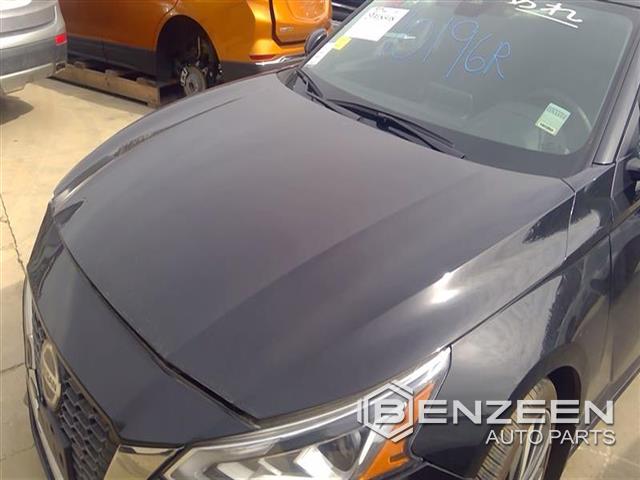BMW 320i xDrive Coolant Reservoir Replacement Cost
Between $313 and $333, the average cost for a BMW 320i xDrive Coolant Reservoir Replacement is between $313 and $333. Labor costs are estimated between $70 and $89 while parts are priced between $243 and $244. This range does not include taxes and fees, and does not factor in your unique location. Related repairs may also be needed. For a more accurate estimate based on your location, use our Fair Price Estimator below. This range does not include taxes and fees, and does not factor in your unique location. Related repairs may also be needed.
Understanding the BMW 320i xDrive Coolant Reservoir Replacement Cost
The cooling system in your BMW 320i xDrive is vital for maintaining optimal engine temperature and preventing catastrophic damage. A key component within this system is the coolant reservoir, also known as the expansion tank or overflow tank. This component stores excess coolant and allows for expansion and contraction due to temperature changes. When this reservoir develops a leak or becomes damaged, it needs to be replaced. Understanding the BMW 320i xDrive coolant reservoir replacement cost is essential for budgeting and making informed decisions about your vehicle's maintenance.
Detailed Cost Breakdown
The overall BMW 320i xDrive coolant reservoir replacement cost is influenced by several factors, primarily the cost of the part itself and the labor required for installation.
Regional Cost Variations: It's important to note that these figures are averages. The cost of parts and labor can vary significantly depending on your geographic location. Major metropolitan areas or regions with a higher cost of living will generally see higher repair costs compared to rural areas.
OEM vs. Aftermarket Parts Costs: For your BMW 320i xDrive, opting for Original Equipment Manufacturer (OEM) parts ensures they are designed to meet BMW's exact specifications. While OEM parts typically offer the best fit and longevity, they also tend to be more expensive. Aftermarket coolant reservoirs can be a more budget-friendly option, but it's crucial to choose reputable brands to ensure quality and compatibility. The price difference between OEM and aftermarket reservoirs can range from 10-30%.
Shop Type Differences (Dealership vs. Independent):
- BMW Dealerships: Generally have the highest labor rates and often exclusively use OEM parts. This can lead to a higher overall BMW 320i xDrive coolant reservoir replacement cost, but also provides the assurance of manufacturer-certified technicians and genuine parts.
- Independent European Auto Shops: Often have more competitive labor rates than dealerships and may offer both OEM and high-quality aftermarket parts. This can result in a lower overall cost while still providing expert service for your BMW.
- General Repair Shops: May offer the lowest labor rates, but it's essential to ensure they have experience working on European vehicles like BMWs, as specialized knowledge is beneficial.
Factors Affecting Cost
Several variables can influence the final BMW 320i xDrive coolant reservoir replacement cost:
- BMW Dealerships: Generally have the highest labor rates and often exclusively use OEM parts. This can lead to a higher overall BMW 320i xDrive coolant reservoir replacement cost, but also provides the assurance of manufacturer-certified technicians and genuine parts.
- Independent European Auto Shops: Often have more competitive labor rates than dealerships and may offer both OEM and high-quality aftermarket parts. This can result in a lower overall cost while still providing expert service for your BMW.
- General Repair Shops: May offer the lowest labor rates, but it's essential to ensure they have experience working on European vehicles like BMWs, as specialized knowledge is beneficial.
Diagnostic & Repair Process
How are coolant reservoir issues diagnosed?
When an issue arises with the engine coolant reservoir, the coolant hose from the radiator, and the pressure relief valve will be inspected to ensure they have not become clogged. Also, the radiator cap should be tested to ensure it is releasing engine coolant into the reservoir at the proper system pressure. If the reservoir was noted to be leaking, it will be immediately diagnosed as failed, and replaced, unless the leak originates from the inlet hose.
How is a coolant reservoir replaced?
Replacing the engine coolant reservoir is normally a quick and easy task, and does not require draining coolant from the vehicle in most cases. If the coolant is contaminated, or has not been changed or flushed per manufacturer scheduled maintenance intervals, the coolant should be flushed and refilled. The hose connecting the reservoir and radiator will be clamped, and disconnected from the reservoir. If the reservoir is empty due to cracking, it will not require draining. The old reservoir is removed from the engine bay, and the replacement coolant reservoir installed. The hose to the pressure relief valve at the top of the radiator will be installed, and the clamp removed to allow coolant flow. The reservoir is then filled, and the system tested to ensure the customer’s complaint is resolved.
Our Recommendations for Coolant Reservoir Issues:
Engine coolant flushes are often recommended needlessly, raising repair costs. However, there is a schedule for when these services should be performed. The factory scheduled maintenance section in the owner’s manual provides information for the customer concerning which maintenance items should be performed, and when they are needed. We always recommend following the factory scheduled maintenance intervals for preventive maintenance. If a leak is being repaired, and the coolant may be drained and replaced. Flushing the coolant system should be performed if excessive corrosion is present, or if the factory scheduled service interval has passed.
What to look out for when dealing with coolant reservoir issues:
It is a good practice to turn the heater onto its highest setting if the engine begins to overheat. The heater core can act as a secondary radiator, but temperatures inside the vehicle may become unbearable. Some coolant reservoirs are under constant pressure, and opening the reservoir or radiator while the engine is hot may result in severe scalding, requiring immediate medical attention.
Can I replace the coolant reservoir myself?
The average DIYer can maintain the engine cooling system without much trouble. However, diagnosing the system can be a daunting task if the function of each individual component is not fully understood. If the cause of overheating is known, repairing this issue as a DIY is generally recommended for the average DIYer. If knowledge of the engine cooling system and diagnosing cooling issues are lacking, this repair should be handed to a certified technician.
Warning Signs & Symptoms
Recognizing the signs of a failing coolant reservoir can help you address the issue before it causes more significant problems for your BMW 320i xDrive.
- BMW Dealerships: Generally have the highest labor rates and often exclusively use OEM parts. This can lead to a higher overall BMW 320i xDrive coolant reservoir replacement cost, but also provides the assurance of manufacturer-certified technicians and genuine parts.
- Independent European Auto Shops: Often have more competitive labor rates than dealerships and may offer both OEM and high-quality aftermarket parts. This can result in a lower overall cost while still providing expert service for your BMW.
- General Repair Shops: May offer the lowest labor rates, but it's essential to ensure they have experience working on European vehicles like BMWs, as specialized knowledge is beneficial.
Cost-Saving Strategies
Minimizing the BMW 320i xDrive coolant reservoir replacement cost is achievable with a few smart strategies:
- BMW Dealerships: Generally have the highest labor rates and often exclusively use OEM parts. This can lead to a higher overall BMW 320i xDrive coolant reservoir replacement cost, but also provides the assurance of manufacturer-certified technicians and genuine parts.
- Independent European Auto Shops: Often have more competitive labor rates than dealerships and may offer both OEM and high-quality aftermarket parts. This can result in a lower overall cost while still providing expert service for your BMW.
- General Repair Shops: May offer the lowest labor rates, but it's essential to ensure they have experience working on European vehicles like BMWs, as specialized knowledge is beneficial.
FAQ Section
- BMW Dealerships: Generally have the highest labor rates and often exclusively use OEM parts. This can lead to a higher overall BMW 320i xDrive coolant reservoir replacement cost, but also provides the assurance of manufacturer-certified technicians and genuine parts.
- Independent European Auto Shops: Often have more competitive labor rates than dealerships and may offer both OEM and high-quality aftermarket parts. This can result in a lower overall cost while still providing expert service for your BMW.
- General Repair Shops: May offer the lowest labor rates, but it's essential to ensure they have experience working on European vehicles like BMWs, as specialized knowledge is beneficial.
Don't let a faulty coolant reservoir compromise your BMW 320i xDrive's performance. By understanding the potential costs and seeking timely repairs, you can keep your vehicle running smoothly and efficiently. Get a personalized quote today to understand the exact BMW 320i xDrive coolant reservoir replacement cost for your specific situation.

